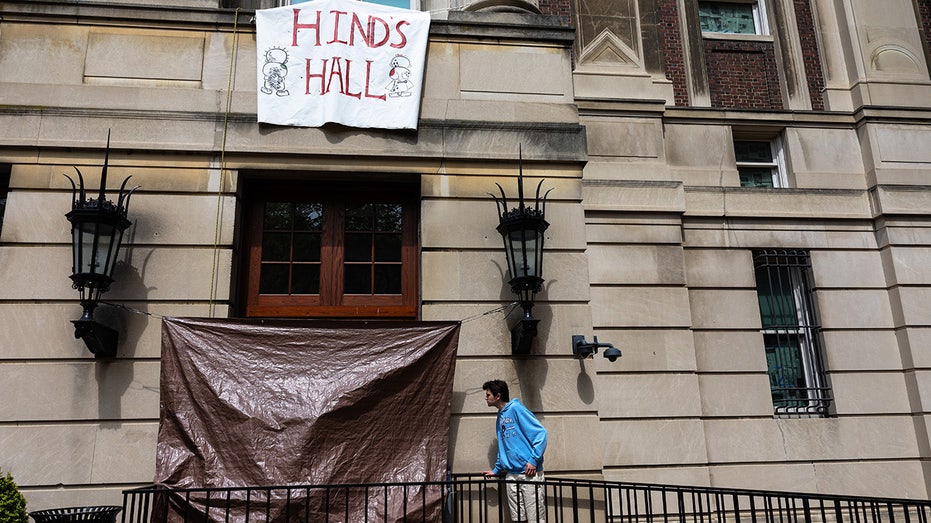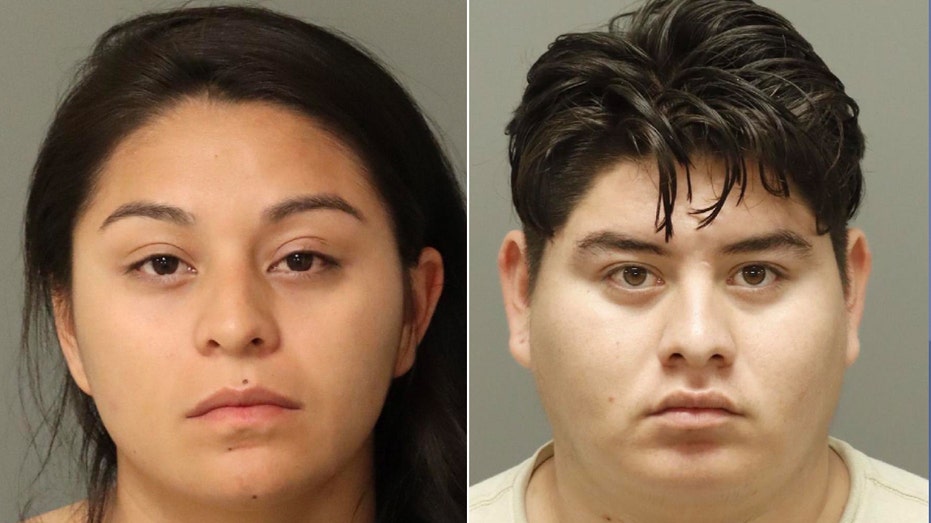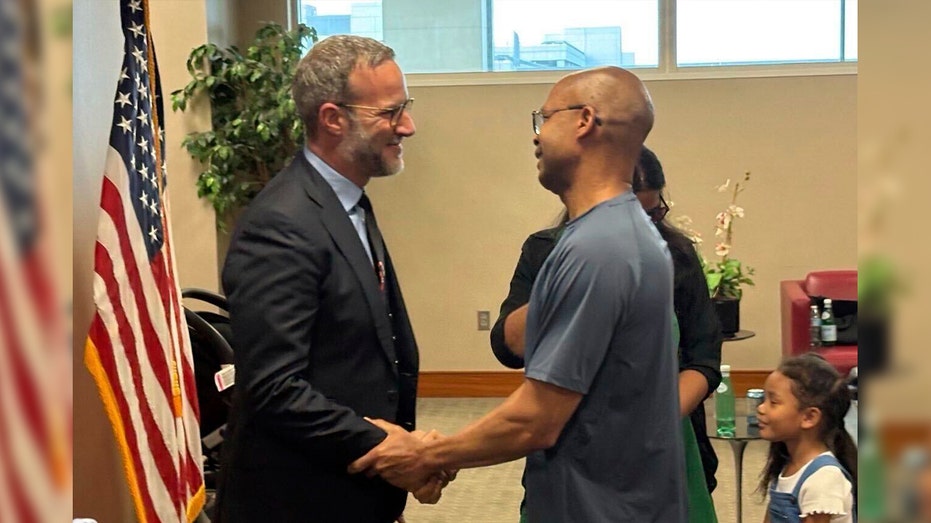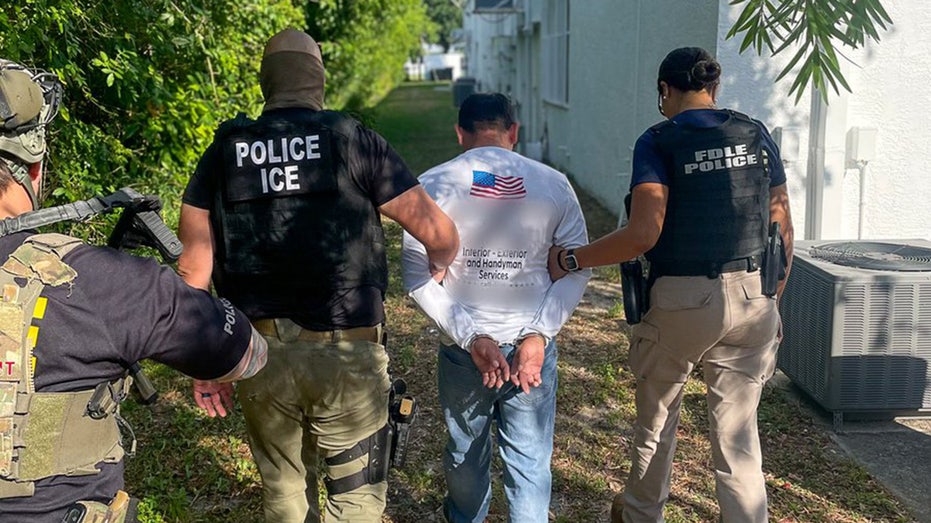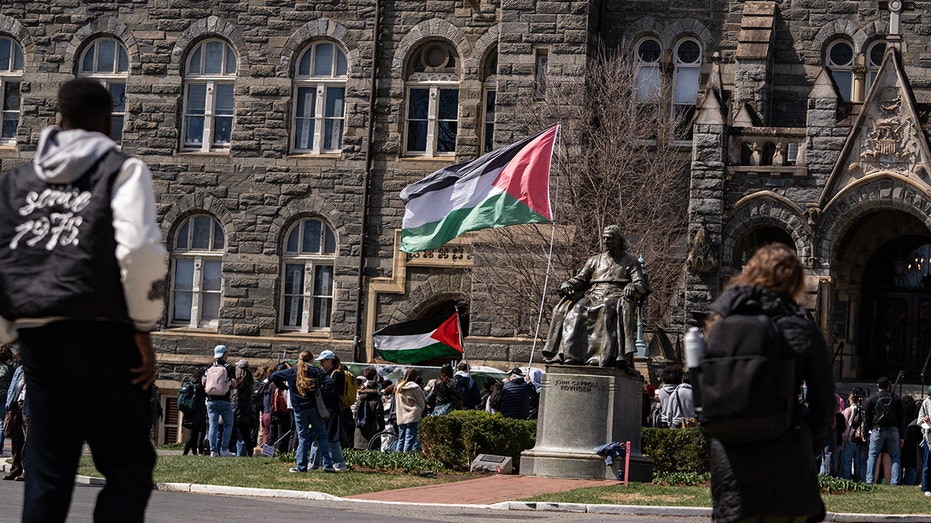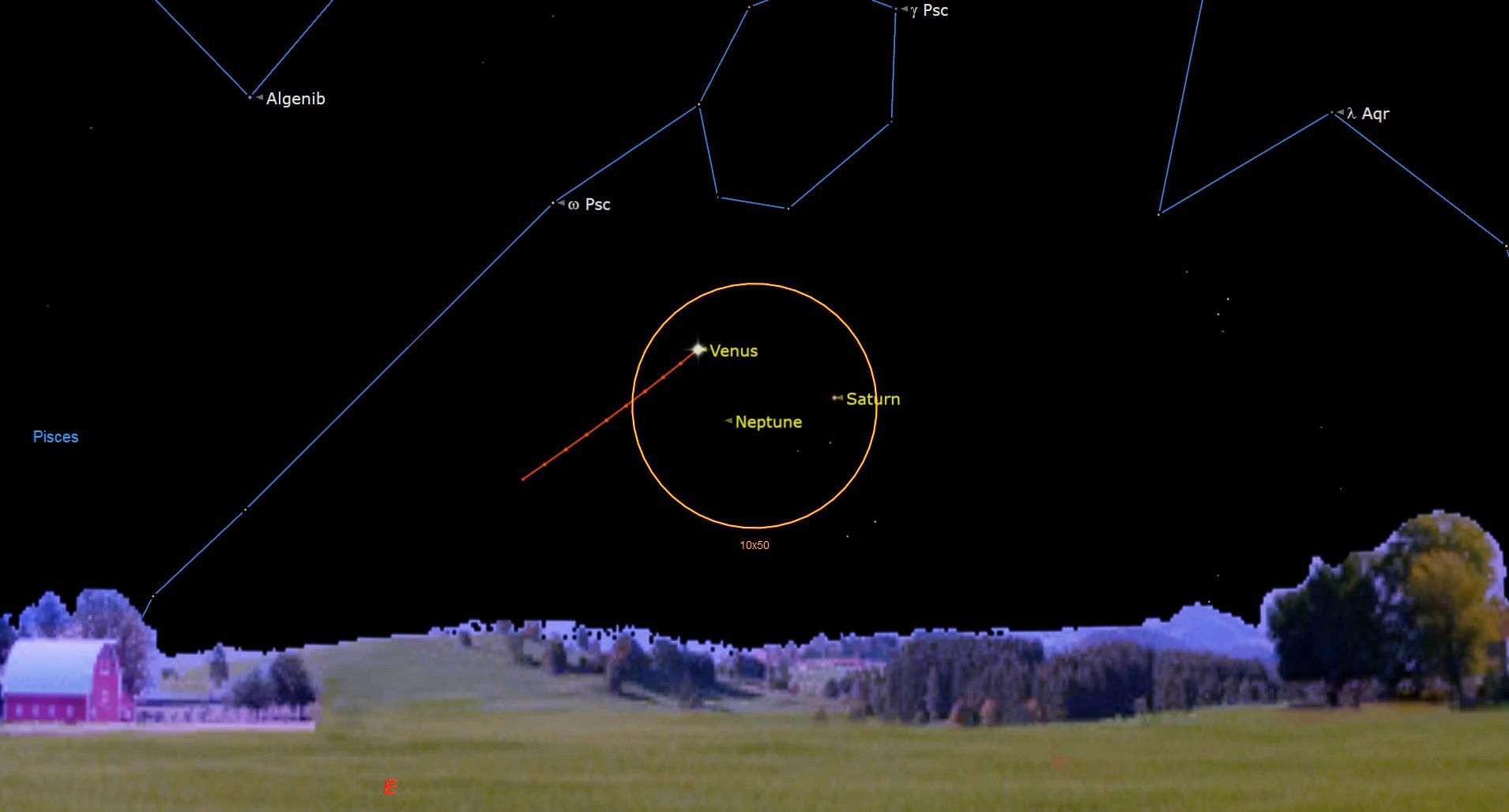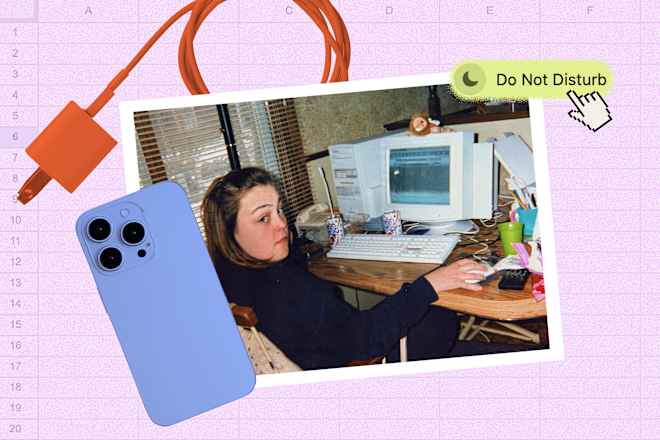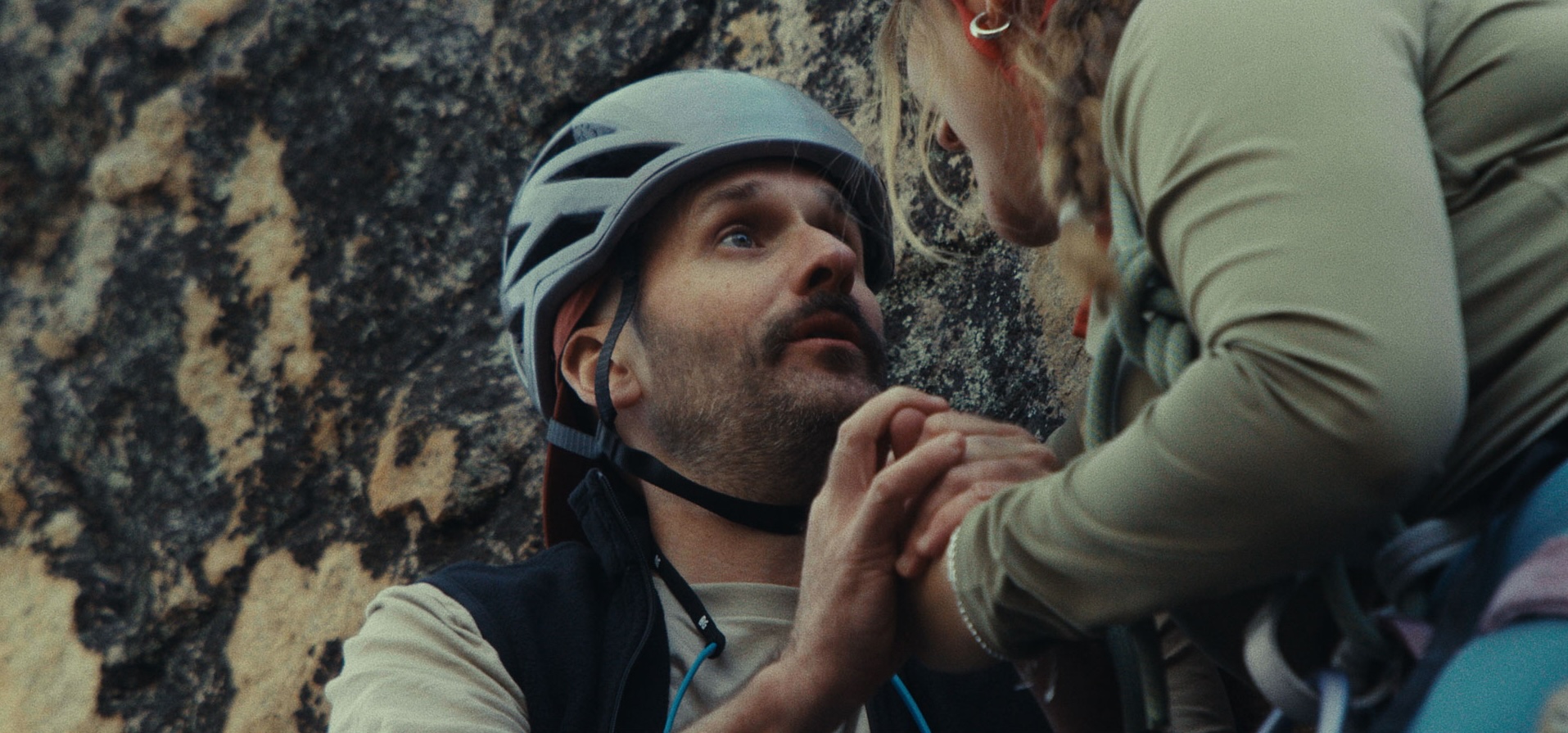Griffin Ced Discusses Witchcraft, Covens, Curses and Founding the Ced Tradition [Interview]
Welcome back to DEAD Time. Last month, I talked with filmmaker Liam Le Guillou about his documentary A Cursed Man, in which he had not one, but two curses placed upon himself; in order to have them removed, he participated in a ritual performed by a coven led by Griffin Ced. The coven practices the […] The post Griffin Ced Discusses Witchcraft, Covens, Curses and Founding the Ced Tradition [Interview] appeared first on Bloody Disgusting!.
![Griffin Ced Discusses Witchcraft, Covens, Curses and Founding the Ced Tradition [Interview]](https://bloody-disgusting.com/wp-content/uploads/2025/04/Griffin-Ced-1.jpg)
Welcome back to DEAD Time. Last month, I talked with filmmaker Liam Le Guillou about his documentary A Cursed Man, in which he had not one, but two curses placed upon himself; in order to have them removed, he participated in a ritual performed by a coven led by Griffin Ced.
The coven practices the Ced Tradition, a British traditional witchcraft line, which was founded in America by Griffin. Griffin is the Virtue holder and Witch Father for the Ced Tradition and family line and has led covens in the Ced Tradition for the past thirty years in the United States. He also manages The Green Man Store, a metaphysical and magical store in Los Angeles.
Recently, Bloody Disgusting had the pleasure of chatting with Griffin Ced about founding the Ced Tradition, covens, witchcraft, and his experience performing the ritual to remove the curses placed on Liam Le Guillou in A Cursed Man.
 Bloody Disgusting: You are the founder and Witch Father for the Ced tradition, a British Traditional witchcraft line with multiple covens around the U.S. Can you tell me a little bit about the Ced tradition for those reading this, and when did you first begin practicing witchcraft?
Bloody Disgusting: You are the founder and Witch Father for the Ced tradition, a British Traditional witchcraft line with multiple covens around the U.S. Can you tell me a little bit about the Ced tradition for those reading this, and when did you first begin practicing witchcraft?
Griffin Ced: I was kind of born into witchcraft really. My family was very much into what they call the old ways, so they didn’t really call it witchcraft. When I was about eleven years old, I started going to a house where there were some practitioners, and I started training with these practitioners. My mom was very encouraging of me hanging out with these people and she also introduced me to some spiritualists where I did some training with them as well. So, from the age of eleven on I was working with the metaphysical and this particular coven. The coven didn’t have a tradition, they were just basically working with what they called the old ways and the gifts. It was at the end of that training that I basically got a connection with the line of Ced and I’ve been working with it ever since. I raised the first Ced coven here in America in 1993 and we’ve been running ever since.
BD: Wow, so you’ve been doing this for a long time.
GC: Yeah, in terms of my history, I’ve got three covens right now working in America. The original mother coven is still up and running and it’s clocking over thirty years now. I’ve become very active in different Pagan communities, where I sort of helped try and promote community identity and help other lines and traditions kind of get cohesive and strengthened. So, as a community member as well, I’ve been very active.
BD: I was not familiar with the Ced tradition until I saw the documentary A Cursed Man. How is your coven different from a coven who practices Wicca?
GC: Eclectic Wicca, which is what has primarily become very common throughout the world now, has its foundations in the practice of Gardner. Gerald Gardner established the Gardnerian tradition and Gardnerian Wicca in the late 1950s and early 1960s in Britain. He cobbled together old rural practices and metaphysical beliefs and folklore practices coming out of the villages. He also wove in feminist spirituality; there was a woman’s movement going on at the time throughout the Western world. Women were burning their bras and looking for recognition in the workplace and things like that. So, the Divine Feminine became part of the Wiccan movement. In order to hang it on a magical practice, they incorporated a lot of ceremonial magic, through Aleister Crowley’s systems.
So, it was really three different sources that were woven together into what was a spiritual practice for the present day. It really worked with the idea that anybody could be a Wiccan. Basically, it had to do with engagement in the divine feminine and in a spiritual, magical belief system, but it didn’t rely on people’s ability to work with spirit, or to have what they call the gifts. So, the Wiccan traditions are very much a modern day, spiritual based movement, with recognition of the divine feminine and recognition of magic in the universe.
With traditional witchcraft, there are two lines of thought on this. One involves those that are based on the Grimoire writings of the Elizabethan period and since then, where people have gone into the old writings and working with the sorcerer’s material from there and therefore getting deep into sorcery type work, and they call this traditional witchcraft. And then there are people like me, who are the old school people with the gifts; people who work with the sight, with healing, with the ability to perceive and work with spirit. This is what we called it back in the old days, was the gifts, and to me, this is what you would have recognized back in the old times as being the village witch. So, this is the old-time witchcraft that would have been recognized by communities. From that, I have been working to further enflesh the structure and the system, so that people who have a sense of spirit, people who have the gifts, can come in and find some structured training and develop their ability to commune with spirit and develop their gifts.
So, traditional witchcraft is different from wicca in that it is a lot more involved with our relationship with spirit and our perception of spirit, our working with the Gods and the spirits one on one in an interactive relationship. We work with spiritual allies, with familiars, and the root of the work is really in those relationships. We’re not actually a religion in the sense of worshipping, we’re more a religion in the sense sort of like Buddhism would be; it has to do with a philosophical approach to reality, a spiritual approach to reality, and relationships with spirit, including divine spirit.
BD: I can’t believe The director of A Cursed Man, Liam Le Guillou, wanted to have a curse placed on himself. There is absolutely no way I would do that.
GC: [laughs] Oh, my God.
BD: When he first came to you, you advised him against having himself cursed.
GC: I told him he was an idiot, basically. A lot of the footage didn’t make it into the documentary. I literally spent all day with Liam, and he interviewed me about witchcraft and magic. But in the footage that probably didn’t make it, there was a time when I looked at him and I said, “You know, you are an absolute, bloody idiot for doing this. You must be crazy.” In a way, I do understand because if you look at the Victorian people, there used to be freak shows. They had a fascination for the horrific, really. People get stuck in traffic jams because there’s been an accident and who knows, you may get to see something horrific. It’s always the darker side where we look for something extraordinary and if you’re going to look for the faith of God, then you have to go to the darker, more extraordinary side to find it. Because we are predisposed to embrace blessings and good things; we’ve got like an open invitation to, “Please make my life better. Give me blessings. Give me a great life.”
So, when it arrives, we kind of incorporate it with very little thought until we really establish a good life and then if we are sensitive, we stop and we say, “God, how lucky I am. How blessed I am.” But we don’t have that boundary where suddenly it hits us hard that things change whereas we constantly have this boundary against crisis, we don’t want crisis in our life. So, when crisis arrives, it hits you hard. And so, to go for a curse rather than a blessing makes sense because in that crisis, you may actually get to perceive the presence of the supernatural. In the end, I think even in the documentary, he says, “I realize I’m not really looking for a curse, I’m looking for an encounter with the divine.”

BD: Ultimately, you led your coven in a ritual to remove the curses Liam had placed on himself. Can you talk a little bit about what was involved in the ritual and what that experience was like?
GC: When he came back to me, he told me that he was experiencing trouble in many areas of his life. It didn’t come across quite as clearly in the movie, but his life was really sort of stuck in the toilet on many fronts. So, when he came back, it was like, “Oh yeah, this man has really gotten himself into a bad place.” I often tell people that I will not do rituals in front of the camera for a couple of reasons. One is that in this time and age there is a great opportunity for people to take footage of us and then in editing use it to ridicule us and it makes us look like a bunch of idiots. And I’m aware of the abuses of the editing room and for this reason I try and protect my people and their own credibility. It’s not a spectator sport, you’re not here just to view us, basically exposing something that’s incredibly sacred to us for your entertainment.
But with Liam, I felt that there was a real sense of respect and integrity with him and so I was willing to sort of do a lot more with Liam than I have with any other documentary maker that’s come and talked to us before. I said, “Okay, dude, I’ll talk to my coven, and I’ll see if we can do something for you.” And the coven said, “Sure. If you trust him, then let’s do it.” So, we were willing to do something, that to be honest, is incredibly private, incredibly sacred, and exposes us, not to witch burnings and hangings, but it could expose us to ridicule. And we knew that going into it, but we said, “Yeah, okay, we’re going to trust these people and make sure that they don’t really betray us.”
So, there’s that side of it. When it comes to the work, he showed me some of the footage of where these curses were put into place, and what I could tell was that the gris-gris, the little bag that was made for him in New Orleans, was really the curse that was taking him down. That had the real kick in it, but it didn’t kick in as hard as it was until he did the working in Mexico with the Satanist Shaman. What I came to realize was that the gris-gris as a curse was working, very insidiously, but it wasn’t until he put himself into the mix with his own pact using himself basically as the spell saying, “I will be the mediator directly from the spirit to empower this upon me.” He put himself in the mix; it’s like he took the gris-gris and he attached himself, by his own free will, and with a blood sacrifice, to the actual work. And I went, “Oh, shit. Now he’s screwed.” The gris-gris was one thing, but for him to make this connection with his own self upon this working, he now has become the delivery device for this curse to really take impact upon him.
I was looking at it and the first time we went through, we said to him, “Look, sorry love, but you’re screwed. There is no way to undo this. You’ve made a blood pact, and you’ve willingly attached yourself to this whole thing. There is no way of getting you out of this.” And I could see on his face he was like, “Oh shit.” I could see that he was panicking. So, I said, “Well, let’s have another look just to make sure.” We took the video and we rewatched it as we were looking at it, we realized there was a provision within it where he had given it a result. He had gotten to all the things he wrote on the paper, which we don’t discuss because we don’t want to reawaken what he did, but there was one piece in it where he said, “So that I may know that you are true,” and we went, “Oh, hang on a second. There’s an offramp here.” There was an intention of where he wanted to get to, so that there was an established recognition of the truth of this particular spirit that he was a reality, and he had gotten to that point. So, if he can recognize that he has arrived at the destination that was what this was all about, then there is a possibility to bring conclusion into the contract and put it down. And this was the only opportunity for us to really put an end to what was going on with him.
We told him, “You know, this is on you. You’re going to have to actually bring closure to this contract yourself. You’re going to have to make the journey. You’re going to have to do the work. We can set it up so that you can do this, but as you made the contract, you have to be the one who brings it to closure.” And he said,” Okay, I’m willing to do that.” So, then we put together this ritual for him. The first part was taking apart the gris-gris. When we first started taking the bag apart, I was using iron on it, it howled and it screamed and it hissed and it kicked back, and I had to push it a bit. Once I had gotten it to a place of basically, “Thank you and you have accomplished your goal,” it unraveled very easily. The practitioner in New Orleans who put it together put it together with the understanding that it would at some point hopefully be taken apart, so once it understood that that’s where we got to, the actual spell bag was very willing to work with us. Once that was taken apart, we got Liam to take recognition of it and to pull it pieces and we put it into a cauldron.
The next part was to break his direct flesh and blood connection to the channel of the curse and for that he had to bring conclusion to his contract with this Satan spirit, and we knew that that was going to be the hard part. We pushed and we pushed, and we pushed and then bam, it went through, and it was cool and then that was done. We took the mirror into the cauldron, we tapped it, and it exploded. Sometimes we have a hard time getting these things to break and that one just literally exploded in the cauldron. And we were like, “Yes, we got it.” Then the main thing was cleansing. We had to make sure that he was completely cleansed down, and that the coven was cleansed down, and we made a pact at that time never to discuss it until the documentary came out, so that there would be a good length of time that this spirit to be completely settled and put to rest. So, the coven never discussed it again after the working until the premiere of the documentary.

BD: What would you say is the biggest misconception surrounding witchcraft?
GC: The term witchcraft is really a term that came out of the Judeo-Christian mindset for us. You go around the world and witchcraft is perceived as somebody who is outside the tribe, who is outcast, and a person outside of the mainstream. They are in direct union with spirits and even the Gods, which makes them a threat to organized religion. Because you can’t be the mediator for your congregation if you have people in your midst who have a direct line to communicating with the spirit that can actually undermine and may say what your priest is saying. So, there has been an institutional system put there for centuries that every time you have somebody who has this ability, they are demonized by the community. For this reason, they are looked at as evil practitioners who want to do you harm and this is completely the lens of the church or the temple, whatever religion is in play and that sees you as a threat.
When the world starts to look at you through this lens, it is very hard for them to understand that this is you engaged in a sacred practice. It’s like looking at a Buddha in a deep meditation in communion with the divine and saying, “Oh, that’s an evil person.” It’s ridiculous. This isn’t about you; they’re not coming for you. They’re simply trying to have a relationship with spirit; they’re trying to have a relationship with the divine, and it’s not about you. But unfortunately, many of these churches see anything that is of a different path as a direct threat to them. People can have a different approach to life, and it has nothing to do with you and it doesn’t mean that just because they exist, they are a threat.
When it comes to witchcraft, the biggest thing that we face is people’s understanding of us through the filter of the church. Then because the church has demonized us and made us the scary people in the shadows, Hollywood picked it up and they put special effects to it and took it even further. So, even people that don’t come through the church now have a misconception of what it is we actually are and what we do.
BD: What do you think is something that we as a society can do to change that?
GC: I look at the Islamic people, for example, and you’re looking at Iran and the subjugation of all minorities and all women, and you say, “Okay, in that society they don’t have to understand other people. They simply need to tolerate diversity.” This is the same situation that we could have here so easily. There’s this whole demonization of women, demonization of minorities, the same thing can happen here, so more than understanding, I think the first step is just tolerance. I don’t need to understand you, or even agree with you, to respect your right to be. I don’t know how to bring that about. The only tool we can use is education and exposure. If you see us and we’re represented more appropriately in the media, if you talk to us, if you sit down and just have a cup of tea and find out what we’re really about, this exposure is the only thing we can do. To educate is the only thing we can do actively but really, we shouldn’t even have to do this.
Tolerance should be enough, but unfortunately, we’re not necessarily a very tolerant people.
A Cursed Man is available now on all major VOD outlets.
You can visit The Green Man Store’s website here.

The post Griffin Ced Discusses Witchcraft, Covens, Curses and Founding the Ced Tradition [Interview] appeared first on Bloody Disgusting!.
